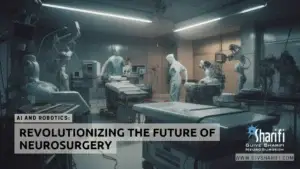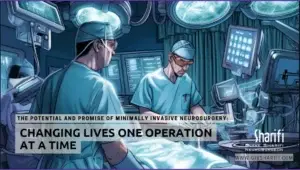Introduction
Minimally invasive neurosurgery has been a game-changer in the field of neurological science. It offers a beacon of hope for patients with complex neurological conditions, significantly reducing surgical risks and recovery times.
Understanding Minimally Invasive Neurosurgery
Minimally invasive, uses advanced technology and innovative techniques to perform surgery through small incisions, often with the aid of an endoscope or microscope. These procedures cause less harm to surrounding tissues and can often be performed, outpatient.
The Advantages of Minimally Invasive Techniques
- Quicker Recovery: Smaller incisions lead to faster healing and a shorter hospital stay.
- Reduced Pain: Less tissue damage results in less postoperative pain and discomfort.
- Lower Infection Risk: The smaller the incision, the lower the chance of infection.
- Better Cosmetic Results: Smaller incisions leave less noticeable scars.
- Suggestion: AI and Robotics: Revolutionizing the Future of Neurosurgery
Minimally Invasive Procedures
• Endoscopic Brain Surgery: This technique uses a small tube with a camera to view and treat brain conditions. It often removes brain tumors and treats hydrocephalus and pituitary tumors.
• Spinal Surgery: Minimally invasive techniques can treat various spinal conditions, including herniated discs, spinal stenosis, and scoliosis.
• Stereotactic Radiosurgery: This non-invasive treatment uses focused radiation beams to treat tumors and other brain conditions.
The Future of This Neurosurgery
With continuous technological advancements, the potential for minimally invasive neurosurgery is vast. The future holds immense promise, from AI-assisted surgeries to improvements in imaging techniques.
Conclusion
Minimally invasive neurosurgery is revolutionizing the way we approach neurological conditions. It’s not just about making surgery safer and recovery quicker; it’s about giving patients a better quality of life.
Engaging Brief: Dive into the world of minimally invasive neurosurgery, a groundbreaking approach that’s changing the landscape of neurological treatments and offering hope to countless patients.
All the images in this article have been generated by AI






